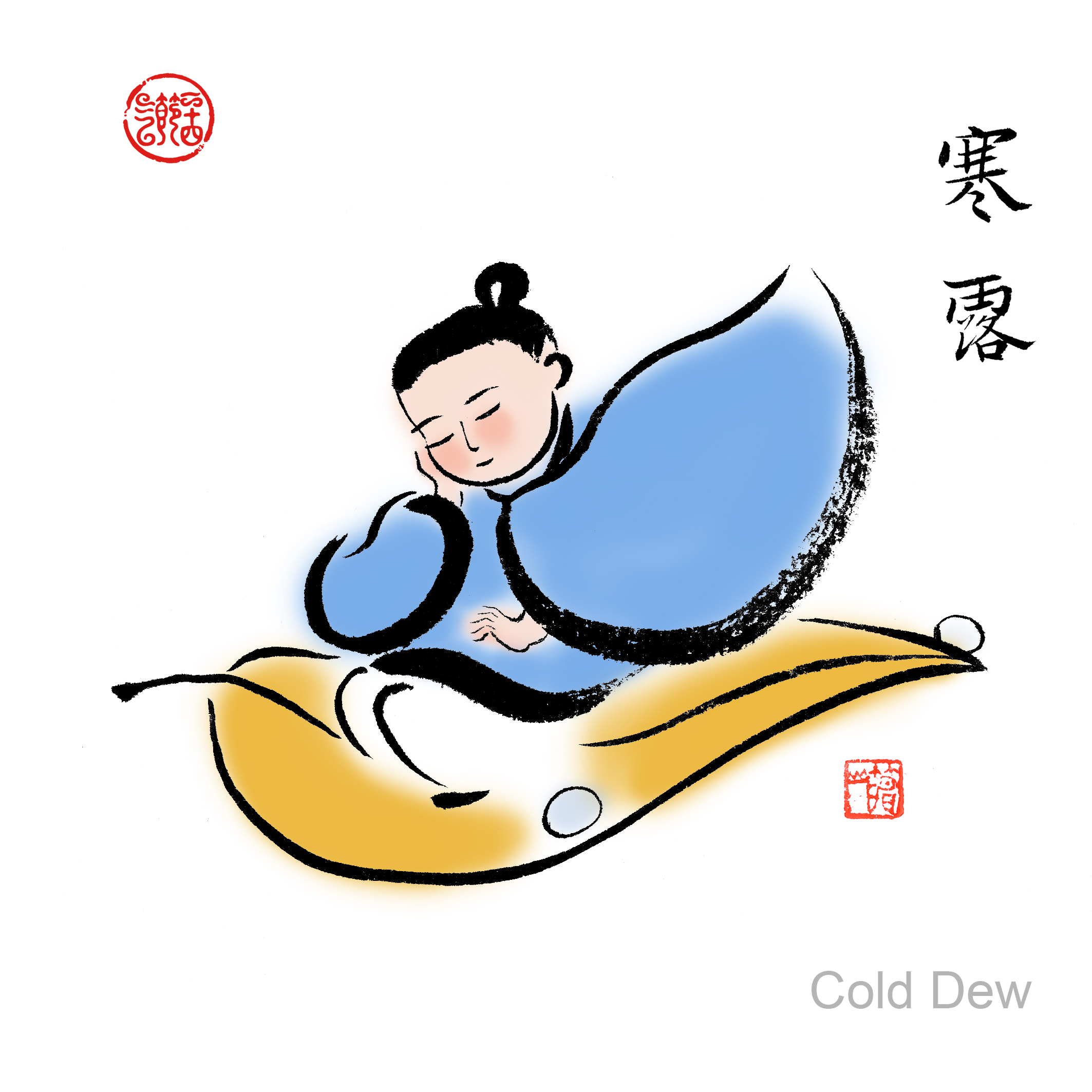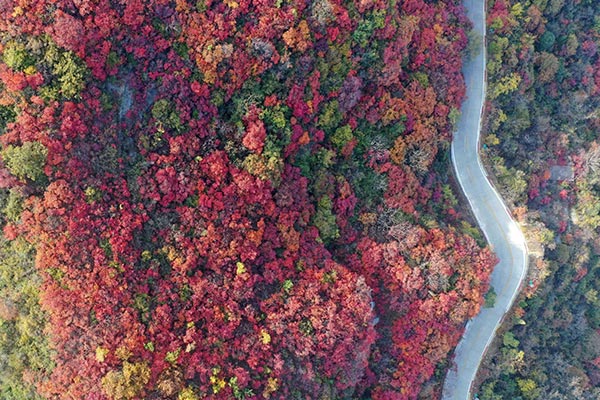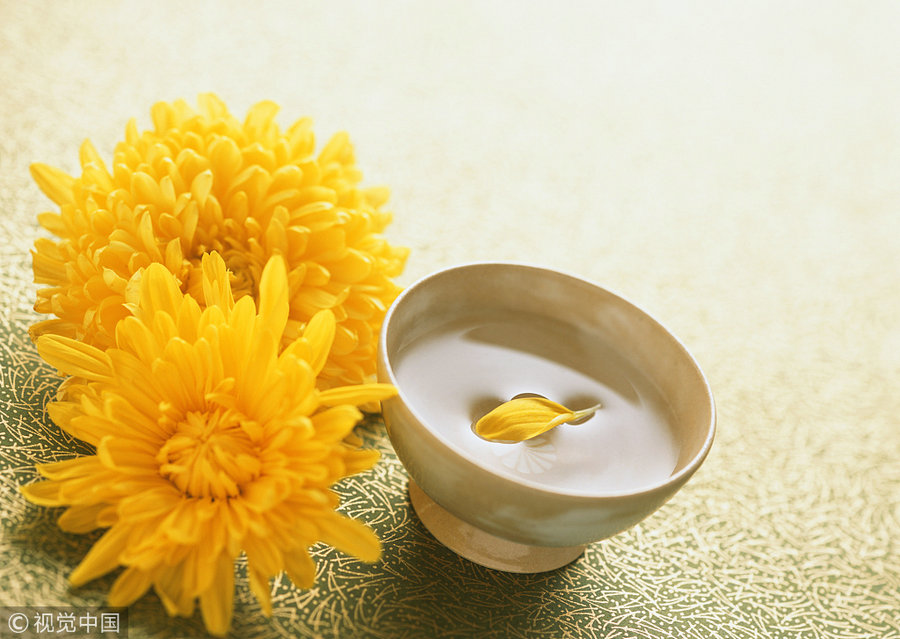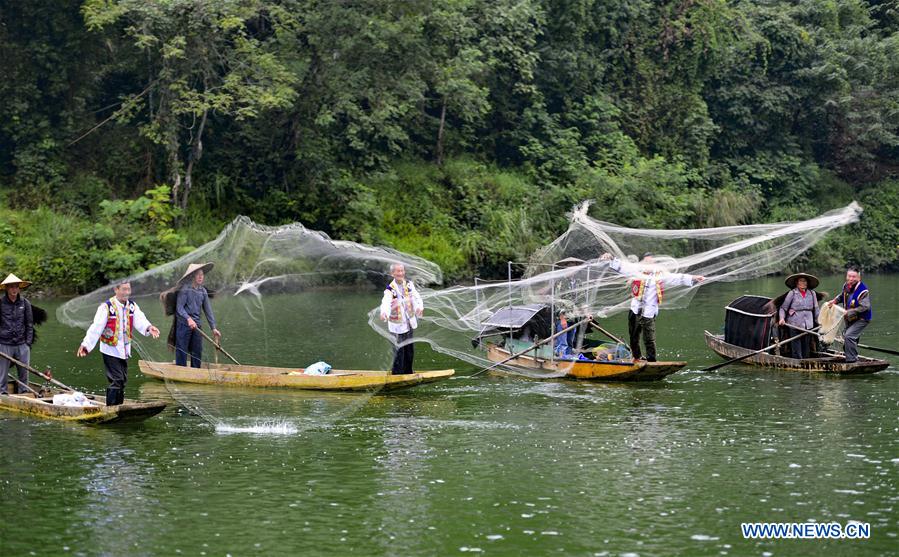Cold Dew, or “Hanlu” in Chinese, the 17th solar term in the Chinese lunar calendar and the 5th solar term in autumn, falls on October 8 this year.

(Illustration: Jian Shan, Beijing International Design Week)
At this time, temperatures are much lower than during White Dew in most areas of China. The dew is greater and colder and there will be less rain, and autumn crops will be ripe.
Here are some things you may not know about Cold Dew.

Aerial photo taken on November 2, 2019 shows the red leaves of Changshou Mountain in Zhulin town of Gongyi City, Central China's Henan Province. (Photo: Xinhua)
Hiking is a popular choice during this period as people can ascend a height and enjoy the view of late autumn with white clouds, red leaves and early frost. It is also the time of year to appreciate the red maple leaves, which only get more colorful as late autumn progresses.
“Flower cake”, or “Hua Gao” in Chinese, is another iconic food of Cold Dew. “Gao” has the same pronunciation as “high” in Chinese, so the cake is conferred on the message of promotion and longevity.

(Photo:VCG)
This is also a season for blossom. The ninth month of the Chinese lunar calendar is also called the month of chrysanthemum, or “flower of longevity” in ancient China, when the flower is at full blossom, people in many regions have the custom of drinking chrysanthemum wine added with glutinous rice to prevent autumn dryness.
During the Cold Dew, temperatures drop significantly. As sunshine couldn’t reach deep water, fish tend to swim in shallow water where the temperature is relatively high. So the Cold Dew is also a perfect time for fishing.

People catch fish with nets during a folk festival in Piaoli Township in Guilin, South China's Guangxi Zhuang Autonomous Region, on October 10, 2018. (Photo: Xinhua)
(Compiled by Yang Mengzhuo; Edited by Yang Yang)


